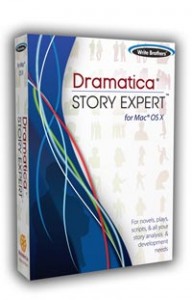The following is excerpted from an online class on story structure presented by co-creator of the Dramatica theory of story, Melanie Anne Phillips, signed on as Dramatica:
Dramatica : Now, I’ll jump ahead for a moment and look at a couple of plot questions…. First of all, is your story forced to a conclusion because your characters run out of time, or run out of options? This is Timelock or Optionlock. We all know what timelocks are…The ticking clock, 48 hours, etc. But what about stories like Remains of the Day? What was the time limit in that? There was none. So why didn’t the story go on forever? Because it was set up to have a limited number of opportunities for the characters to try and make a relationship happen. And when all the opportunities were exhausted, that’s when the story ends. Its important for the audience to know this right up front… they have to know the scope of the argument.
In Speed, the movie, they actually change from one lock to the other and this is confusing…The set up is, that the bomb will go off at 11:30 no matter what. So, the audience gets their sense of tension from the ticking clock. They expect that to be the moment win or lose will happen. All the other “constraints” about the speed of fifty miles per hour, and not being able to take anyone off the bus, are just that, constraints, but the bus could keep going forever with refueling, if it were not for the time bomb. But at the end of the story, what brings the moment of truth? Not the time bomb…. In fact, the bus slows down below fifty as it hits the plane. The LED numbers that are ticking down are the speed, not the time! So, the timelock is not honored.
Then we don’t know WHEN the story is going to end for sure. We assume maybe when the bad guy gets it. But that wasn’t where our tension was headed. Where the tension was built toward at the beginning, and therefore its something of a cheat and bit of a disappointment.
Dramatica : Actually, barring questions, I’ll have to stop there for now, as I have a class of 30 eager writers coming here to Screenplay for a class tomorrow morning.
Dan Steele : is “reception theory” the psychology of the audience?
Dramatica : Yes, Dan, its like this.. We, as an audience, can see pictures in clouds, wallpaper, constellations…We try to order our world, When we see a finished work, we look for pattern. Sometimes we see what the author intended, Sometimes things the author never intended that may or may not be in conflict with the intended message. And sometimes, we see no pattern at all. It may be the Storyform was flawed, missing apiece. Or it may be that the storytelling just didn’t convey it, or it may be that the audience just isn’t tuned into the symbols the author chose to use.
Subscribe to:
Post Comments (Atom)







No comments:
Post a Comment